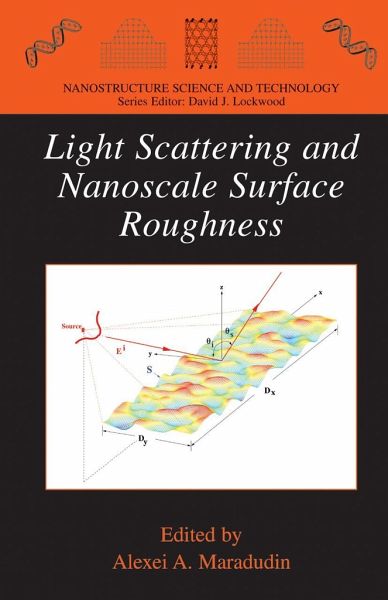
Light Scattering and Nanoscale Surface Roughness
Versandkostenfrei!
Versandfertig in über 4 Wochen
52,99 €
inkl. MwSt.

PAYBACK Punkte
26 °P sammeln!
This book covers both experimental and theoretical aspects of nanoscale light scattering and surface roughness.
Topics include: Spherical particles located on a substrate, surface and buried interface roughness, surface roughness of polymer thin films, magnetic and thermal fluctuations at planar surfaces, speckle patterns, scattering of electromagnetic waves from a metal, multiple wavelength light scattering, nanoroughness standards, Beckmann-Kirchoff scalar scattering theory, random and nonrandom (patterned) surfaces, surface plasmons, instrumentation and experimental methods.
Topics include: Spherical particles located on a substrate, surface and buried interface roughness, surface roughness of polymer thin films, magnetic and thermal fluctuations at planar surfaces, speckle patterns, scattering of electromagnetic waves from a metal, multiple wavelength light scattering, nanoroughness standards, Beckmann-Kirchoff scalar scattering theory, random and nonrandom (patterned) surfaces, surface plasmons, instrumentation and experimental methods.
All real surfaces, both those occurring naturally, and those fabricated artificially and with great care, are rough to some degree. It is therefore of interest, and often of importance, to know the extent to which this roughness affects physical p- cesses occurring at a surface. A particularly interesting class of physical processes occurring at a rough surface is the scattering of electromagnetic waves from it, or their transmission through it. In this case the degree of the surface roughness is referred to the wavelength of the waves incident on it. The study of the scattering of electromagnetic waves from rough surfaces has been actively carried out for more than a century now, since Rayleigh's inves- gations of the scattering of a monochromatic plane wave incident normally on a 1 sinusoidal interface between two different media. The first theoretical treatment of the scattering of an electromagnetic wave from a randomly rough surface was due to Mandel'shtam/ in the context ofthe scattering of light from a liquid s- face. In these pioneering studies the angular dependence of the intensity of the scattered field was calculated by perturbation theory as an expansion in powers of the surface profile function though the first nonzero term, a single scattering approximation.













